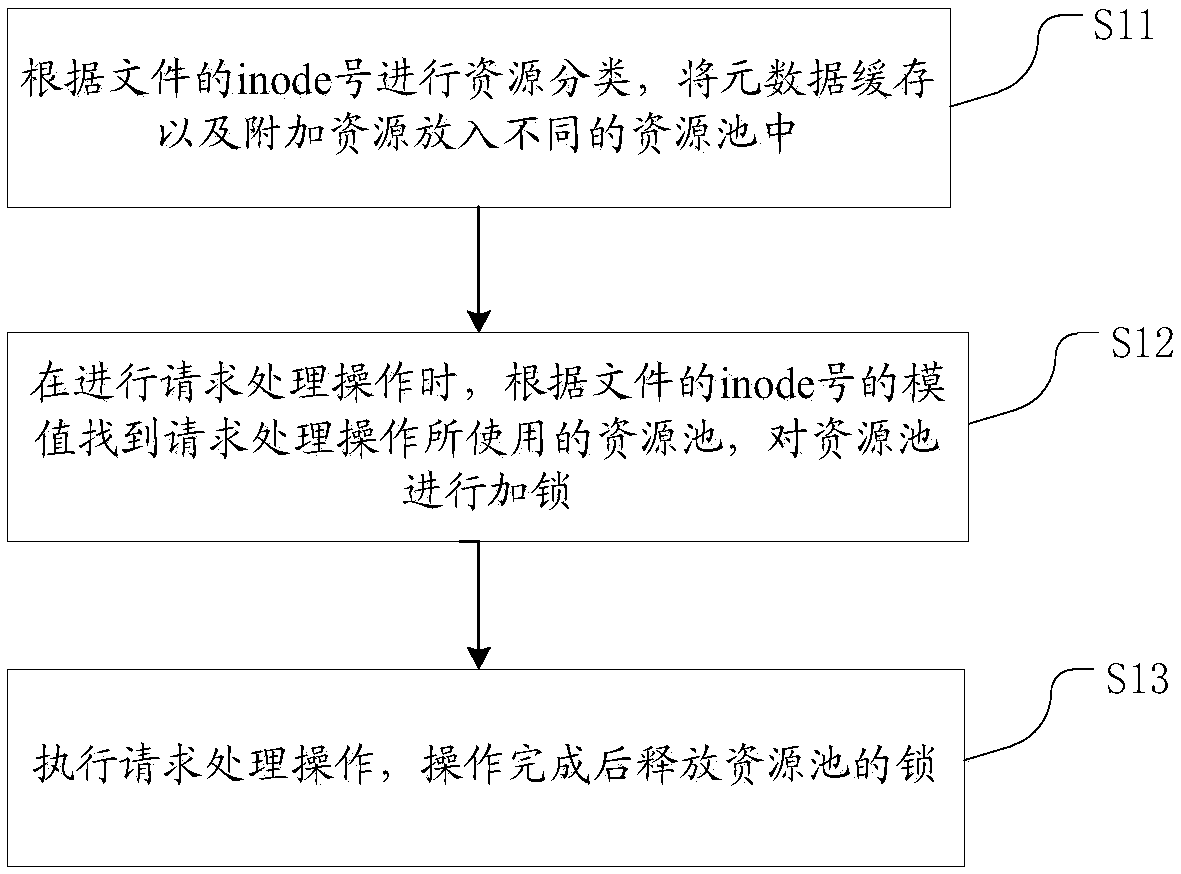Client lock splitting method based on distributed file system
A distributed file and client technology, applied in transmission systems, electrical components, special data processing applications, etc., can solve the problems that metadata cache cannot be processed concurrently, cannot find metadata information immediately, and affect the concurrent capability of clients. The effect of improving concurrent processing capability, improving concurrency capability, and reducing request delay
- Summary
- Abstract
- Description
- Claims
- Application Information
AI Technical Summary
Problems solved by technology
Method used
Image
Examples
Embodiment Construction
[0019] The core of the present invention is to provide a method based on distributed file system client lock splitting, so as to reduce request response delay on the basis of improving client IOPS.
[0020] In order to enable those skilled in the art to better understand the solutions of the present invention, the following will clearly and completely describe the technical solutions in the embodiments of the present invention in conjunction with the drawings in the embodiments of the present invention. Obviously, the described embodiments are only It is a part of embodiments of the present invention, but not all embodiments. Based on the embodiments of the present invention, all other embodiments obtained by persons of ordinary skill in the art without making creative efforts belong to the protection scope of the present invention.
[0021] Explanation of terms:
[0022] IOPS (Input / Output Operations Per Second), that is, the number of read and write (I / O) operations per sec...
PUM
 Login to View More
Login to View More Abstract
Description
Claims
Application Information
 Login to View More
Login to View More - R&D
- Intellectual Property
- Life Sciences
- Materials
- Tech Scout
- Unparalleled Data Quality
- Higher Quality Content
- 60% Fewer Hallucinations
Browse by: Latest US Patents, China's latest patents, Technical Efficacy Thesaurus, Application Domain, Technology Topic, Popular Technical Reports.
© 2025 PatSnap. All rights reserved.Legal|Privacy policy|Modern Slavery Act Transparency Statement|Sitemap|About US| Contact US: help@patsnap.com

